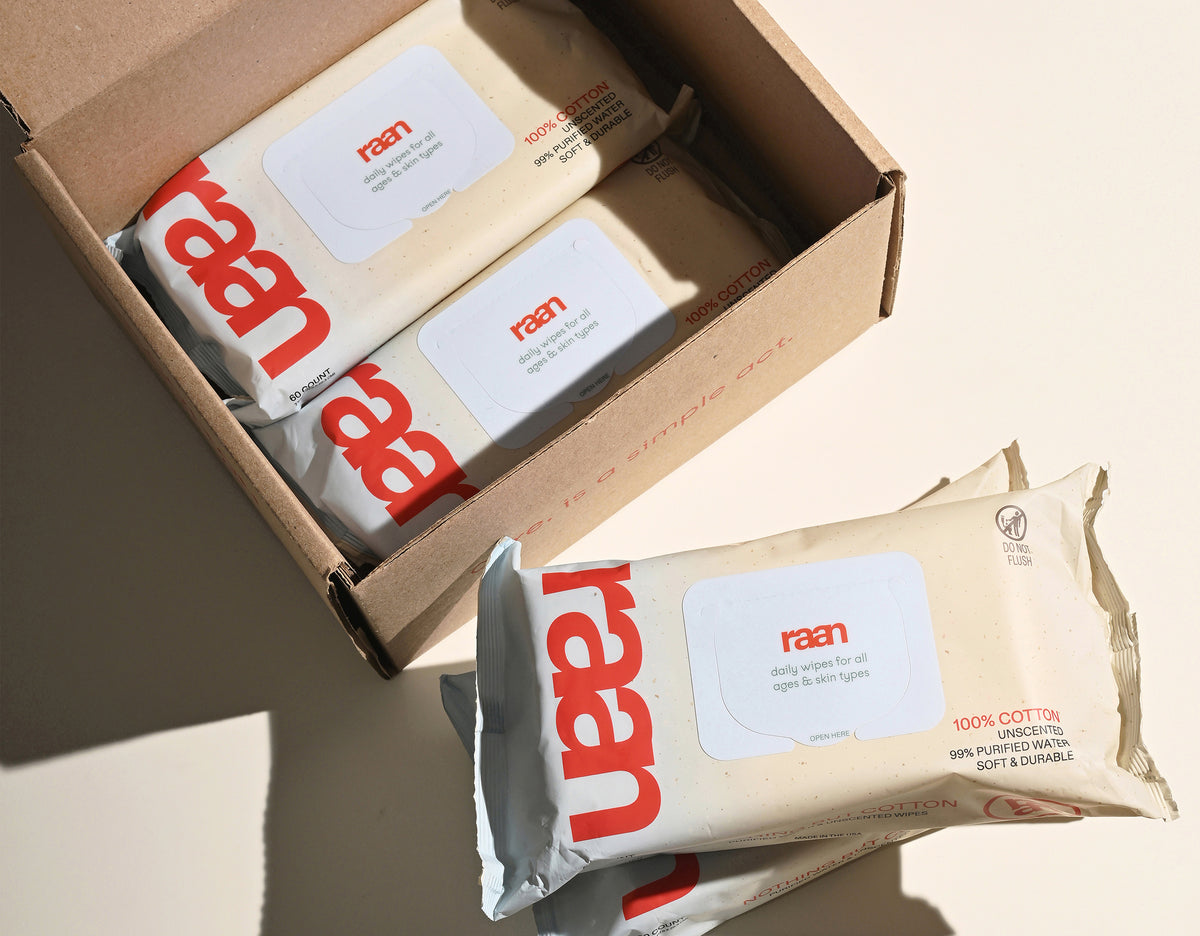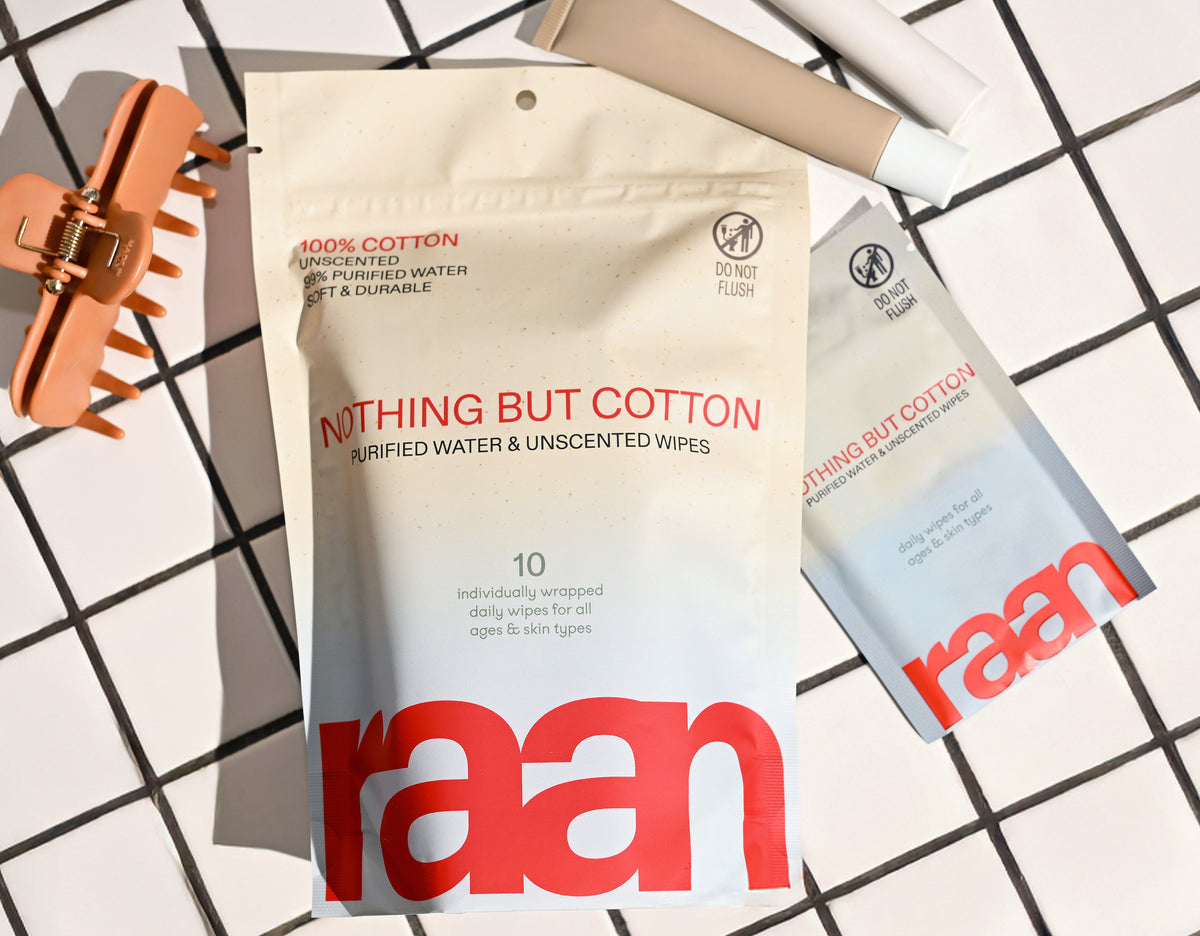Key Takeaways
- Wet wipes are pre-moistened cloths intended for quick cleaning.
- Many conventional wet wipes contain plastic fibers.
- Synthetic preservatives are commonly found in wet wipes.
- Wet wipes often include a mix of chemicals that may be concerning for skin use.
Table of Contents
- The Real Story Behind Your Everyday Wet Wipe
- What's Really Inside Your Wet Wipe
- Finding Your Perfect Wet Wipe Match
- Wet Wipes for Sensitive Skin, What Actually Matters
- Wet Wipes vs. Other Quick-Clean Options
- Wet Wipes and the Planet, What Happens After You Toss Them
- Using Wet Wipes the Right Way, Practical Steps for Real Life
- Your Wet Wipe Decision Guide, Cutting Through Marketing Claims
- The Future of Wet Wipes, Simplicity Meets Innovation
- Clean Choices for Everyday Confidence
- What's Next, Transparency Driving Real Change
- Your Path to Better Wet Wipe Choices
The Real Story Behind Your Everyday Wet Wipe
A wet wipe is a pre-moistened cloth designed for quick cleaning, but what's actually inside that innocent-looking pouch might surprise you. Most conventional wipes contain plastic fibers, synthetic preservatives, and a cocktail of chemicals that sound more like a science experiment than something you'd use on your skin. Unbleached, 100% cotton baby wipes for sensitive skin offer a safer, gentler alternative for those concerned about harsh additives.
The global wet wipe market is expected to reach $27 billion by 2027, driven by busy parents, on-the-go professionals, and anyone seeking convenient care. Yet behind the marketing claims of "gentle" and "natural," many wipes are anything but. Understanding what goes into these everyday essentials, and why it matters, can transform how you think about the products touching your skin dozens of times a day. For those who need a portable solution, individually wrapped cotton pocket wipes are ideal for on-the-go use.
What Makes a Wet Wipe Actually Clean?
True clean starts with the fiber: unbleached, 100% cotton beats plastic every time. Add purified water, food-grade preservatives, and organic aloe, that's it. No synthetic fragrances, no bleach, no microplastics.
What's Really Inside Your Wet Wipe

Most conventional wipes start with polyester or polypropylene, essentially plastic fabric, soaked in water plus a dozen or more additives. Common ingredients include phenoxyethanol, parabens, synthetic fragrances, and brightening agents that can irritate sensitive skin.
Compare that to a minimalist approach: purified water (the majority), sodium benzoate and potassium sorbate (food-grade preservatives), ethylhexylglycerin (skin-conditioning), organic aloe (moisturizer), and citric acid (pH balance). Each ingredient serves a clear purpose without unnecessary additives.
The fiber matters just as much as the formula. Unbleached, 100% cotton wipes feel softer, break down more completely, and skip the microplastics that synthetic materials leave behind. When you're wiping a newborn's skin or refreshing your own face, that difference is everything. For more details on choosing the best wet wipes for your needs, check out our in-depth guide.
Finding Your Perfect Wet Wipe Match
Sensitive skin wipes work for newborns, adults with eczema, and anyone prone to irritation. Look for EWG-verified ingredients and cotton fibers. Body wipes handle post-workout freshening or quick cleanups when soap isn't available. Face wipes offer gentle makeup removal and travel-friendly skincare refreshing, though they're not a replacement for proper cleansing.
New moms reach for wipes during diaper changes, sticky finger emergencies, and those inevitable spills. Pet owners use them for muddy paws and quick cleanups. Busy professionals keep them for desk lunches, commuter refreshing, and gym bag essentials.
The key is matching your wipe to your actual needs. A gentle, cotton-based wipe works across multiple scenarios, baby care, personal refreshing, and household cleanups, without requiring different products for different tasks. If you want a convenient bundle for every situation, the mess-ready pack is a versatile option.
Wet Wipes for Sensitive Skin, What Actually Matters
Sensitive skin reacts to synthetic fragrances, harsh preservatives, and bleaching agents found in many conventional wipes. The biggest culprits? Phenoxyethanol, methylisothiazolinone, and added fragrances, even those labeled "natural."
Safe wipes for sensitive skin contain food-grade preservatives (the same ones used in organic foods), maintain proper pH balance with citric acid, and use organic aloe for gentle moisture. The fabric should be unbleached cotton, no plastic fibers that can create microscopic irritation.
Reading labels becomes simple when you know what to avoid: anything with more than six ingredients probably contains unnecessary additives. EWG Verified products meet strict safety standards, removing the guesswork from ingredient safety.
Wet Wipes vs. Other Quick-Clean Options

| Option | Convenience | Skin Safety | Environmental Impact | Cost | Best For |
|---|---|---|---|---|---|
| Cotton Wet Wipes | High | Excellent | Better (biodegradable) | Moderate | All-purpose, sensitive skin |
| Synthetic Wet Wipes | High | Variable | Poor (plastic fibers) | Low | Heavy-duty cleaning |
| Reusable Cloths | Low | Good | Best | Low | Home use |
| Paper Towels + Water | Medium | Good | Better | Low | Kitchen cleanup |
Wet wipes excel at portable convenience and gentle cleaning but aren't meant for deep sanitization or heavy-duty messes. They bridge the gap between quick cleanup and thorough washing, offering pre-moistened convenience without the prep work of cloths and solutions. For more on how body wipes fit into your routine, see our article on body wipes.
Wet Wipes and the Planet, What Happens After You Toss Them
Most conventional wipes create environmental headaches because they're made from synthetic materials that don't break down. The infamous "wet wipe island" in London's Thames River, a massive blockage of flushed wipes, illustrates what happens when marketing claims meet reality. Despite "flushable" labels, these products clog pipes and persist in waterways. For a deeper look at the environmental impact of wipes, see this EPA resource on wipes and the environment.
Unbleached, 100% cotton wipes break down more completely than synthetic alternatives, though they still belong in the trash, never the toilet. The packaging matters too: conventional wipes often come in hard plastic containers, while more sustainable options use pouches with post-consumer recycled content and 70% less plastic overall.
| Feature | Traditional Wipes | Cotton-Based Wipes |
|---|---|---|
| Material | Polyester/polypropylene blend | Unbleached, 100% cotton |
| Biodegradability | Minimal (plastic fibers persist) | Better (natural fibers break down) |
| Packaging Plastic | Hard plastic lid + container | Flexible pouch (70% less plastic) |
| Microplastics | Released during use | None |
The most sustainable approach combines better materials with mindful usage: choose cotton-based wipes with minimal packaging, use only what you need, and always dispose properly in household trash. If you're just starting out and want to try a variety, the starter set is a great way to sample different options.
Using Wet Wipes the Right Way, Practical Steps for Real Life
For diaper changes: Use one wipe per area, working from front to back. Fold the wipe to create a clean surface for each motion. Never reuse the same section, this prevents spreading bacteria and reduces irritation on sensitive skin.
For personal refreshing: One wipe handles face, hands, and neck effectively. Start with your face (cleanest area), then move to hands and finish with areas that need more cleaning. The gentle, cotton texture works without harsh rubbing that can irritate skin.
Storage matters for maintaining moisture: reseal pouches immediately after use and store in cool, dry places. If wipes dry out, add one teaspoon of distilled water to the pouch and reseal, they'll rehydrate within an hour. Never flush any wet wipe, regardless of packaging claims. For tips on how many wipes you might need for different scenarios, read our guide on how many wipes do I need.
The 30-Second Refresh Rule
One quality wet wipe should handle a complete personal refresh in 30 seconds or less. If you need multiple wipes for basic cleaning, the formula or material isn't doing its job.
Your Wet Wipe Decision Guide, Cutting Through Marketing Claims

Start with intended use: baby care requires the gentlest formulas with food-grade preservatives, while general household cleaning can handle stronger ingredients. Check the fiber content first, unbleached cotton beats synthetic materials for skin contact and environmental impact.
Red flag ingredients include synthetic fragrances (even "natural" ones), phenoxyethanol, and any preservatives not approved for food use. Green flag certifications include EWG Verified, Natural Cotton Seal, and Cruelty Free, these represent third-party verification, not just marketing promises.
Ignore vague claims like "pure" or "eco-friendly" without specifics. Instead, look for concrete details: ingredient counts (fewer is usually better), specific certifications, and clear material composition. Quality wet wipes work across multiple uses, baby care, personal refreshing, and light cleaning, without requiring separate products for each task.
The Future of Wet Wipes, Simplicity Meets Innovation
The industry is shifting toward transparency and minimal ingredients as consumers demand honest formulations. Third-party certifications like EWG Verified are becoming standard, while brands move away from plastic fibers toward natural cotton alternatives.
Packaging innovations focus on reducing plastic waste through flexible pouches, refillable systems, and post-consumer recycled content. Water-based formulations with food-grade preservatives are replacing complex chemical blends, proving that effective doesn't require complicated.
Raan's approach, unbleached cotton, five EWG-verified ingredients, and 70% less packaging plastic, represents where the industry is heading: functional products that work without compromise. The 2025 National Parenting Product Award recognized this shift toward honest, effective care over marketing hype.
Clean Choices for Everyday Confidence
The best wet wipe delivers gentle effectiveness without hidden surprises. Whether you're caring for a newborn, managing busy family life, or simply want reliable personal care, choosing products based on what's actually inside, not just what's left out, makes all the difference.
Trust clear ingredients, verified certifications, and materials that respect both your skin and the environment. Your daily routine deserves products that work as honestly as they're made.
What's Next, Transparency Driving Real Change
Consumer demand for ingredient transparency is reshaping the wet wipe industry. Brands are moving toward shorter ingredient lists, third-party certifications, and clear material sourcing, proving that effective cleaning doesn't require complex formulations.
Packaging innovation focuses on reducing environmental impact through refillable systems, post-consumer recycled content, and eliminating unnecessary plastic components. The shift from hard plastic containers to flexible pouches represents a 70% reduction in packaging plastic without compromising product integrity.
Legislative pressure on "flushable" claims is pushing manufacturers toward honest labeling, while certifications like EWG Verified and Natural Cotton Seal provide consumers with reliable standards beyond marketing promises. This combination of informed consumer choice and regulatory oversight creates lasting industry change.
The future belongs to products that deliver proven performance through simple, transparent means, exactly what busy families need for confident, everyday care.
Your Path to Better Wet Wipe Choices
The best wet wipe decision starts with understanding your specific needs and the real ingredients that meet them. Whether you're managing diaper changes, personal refreshing, or household cleaning, effective products work through quality materials and thoughtful formulation, not marketing complexity.
Choose cotton-based wipes with verified ingredients when skin contact matters most. Look for EWG certification, food-grade preservatives, and clear material sourcing. These standards ensure you're getting honest performance without hidden compromises to health or environmental impact. For more on the benefits of cotton, see our article on best cotton wipes.
Trust brands that show their work through transparent ingredient lists, third-party certifications, and honest packaging claims. Your family's daily routine deserves products that work as reliably as they're made, simple, effective, and genuinely safe.
Frequently Asked Questions
What ingredients in conventional wet wipes can cause skin irritation or environmental harm?
Conventional wet wipes often contain plastic fibers like polyester or polypropylene and synthetic preservatives such as phenoxyethanol and parabens. These ingredients can irritate sensitive skin and contribute to environmental pollution since plastic fibers don’t break down easily.
How do 100% cotton wet wipes differ from synthetic fiber wipes in terms of safety and biodegradability?
100% cotton wet wipes are made from unbleached, natural fibers that are gentle on skin and break down more readily in the environment. Unlike synthetic fiber wipes, they avoid plastic microfibers and use food-grade preservatives, making them safer for both your skin and the planet.
What should I look for when choosing wet wipes for sensitive skin or newborns?
Look for wipes made from unbleached, 100% cotton with a minimalist formula that includes mostly purified water, gentle moisturizers like organic aloe, and food-grade preservatives. Avoid synthetic fragrances, bleach, and plastic fibers to reduce the risk of irritation and support delicate skin.
Are wet wipes a suitable alternative to traditional cleansing methods for face and body care?
Wet wipes can be a convenient on-the-go option for quick refreshment but aren’t a full substitute for regular face or body cleansing. Choose wipes with simple, safe ingredients to support sensitive skin, and use them as a complement to your usual routine rather than a replacement.






